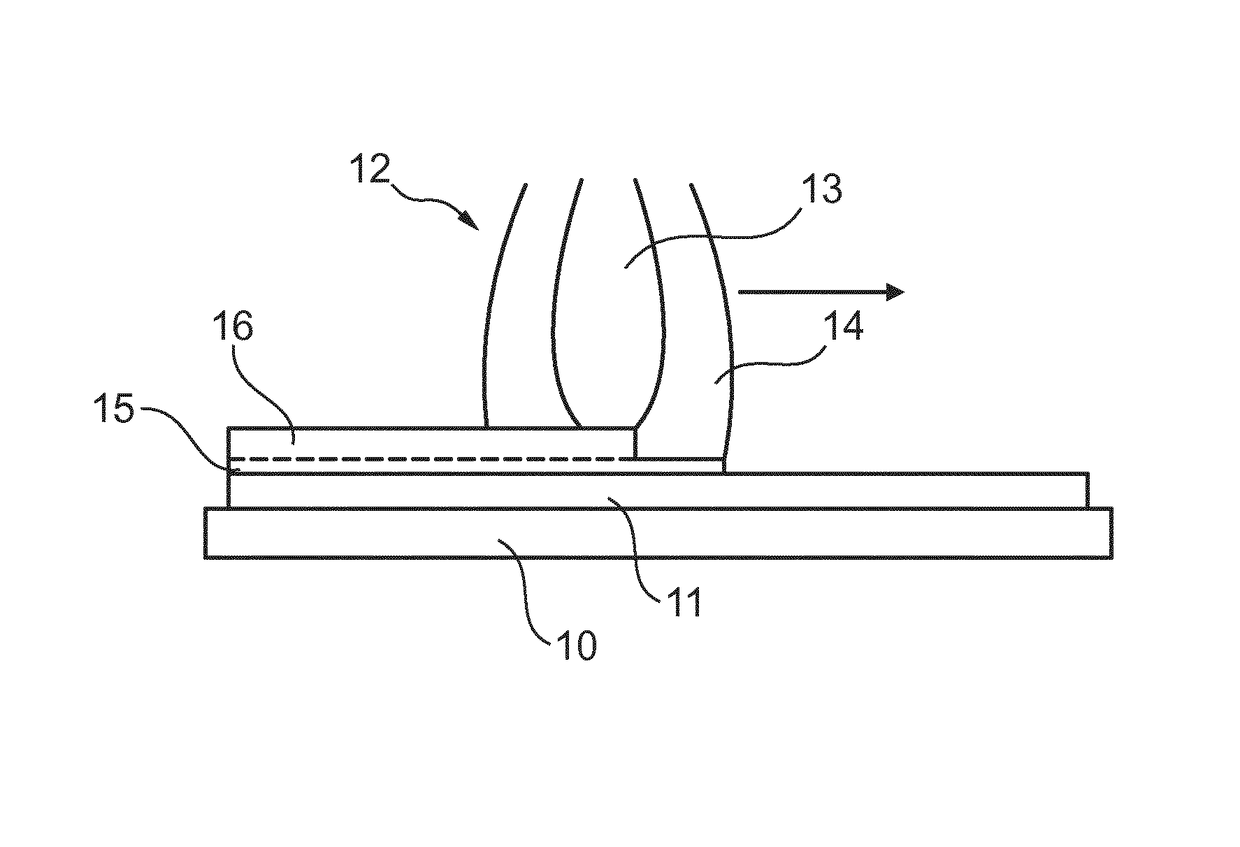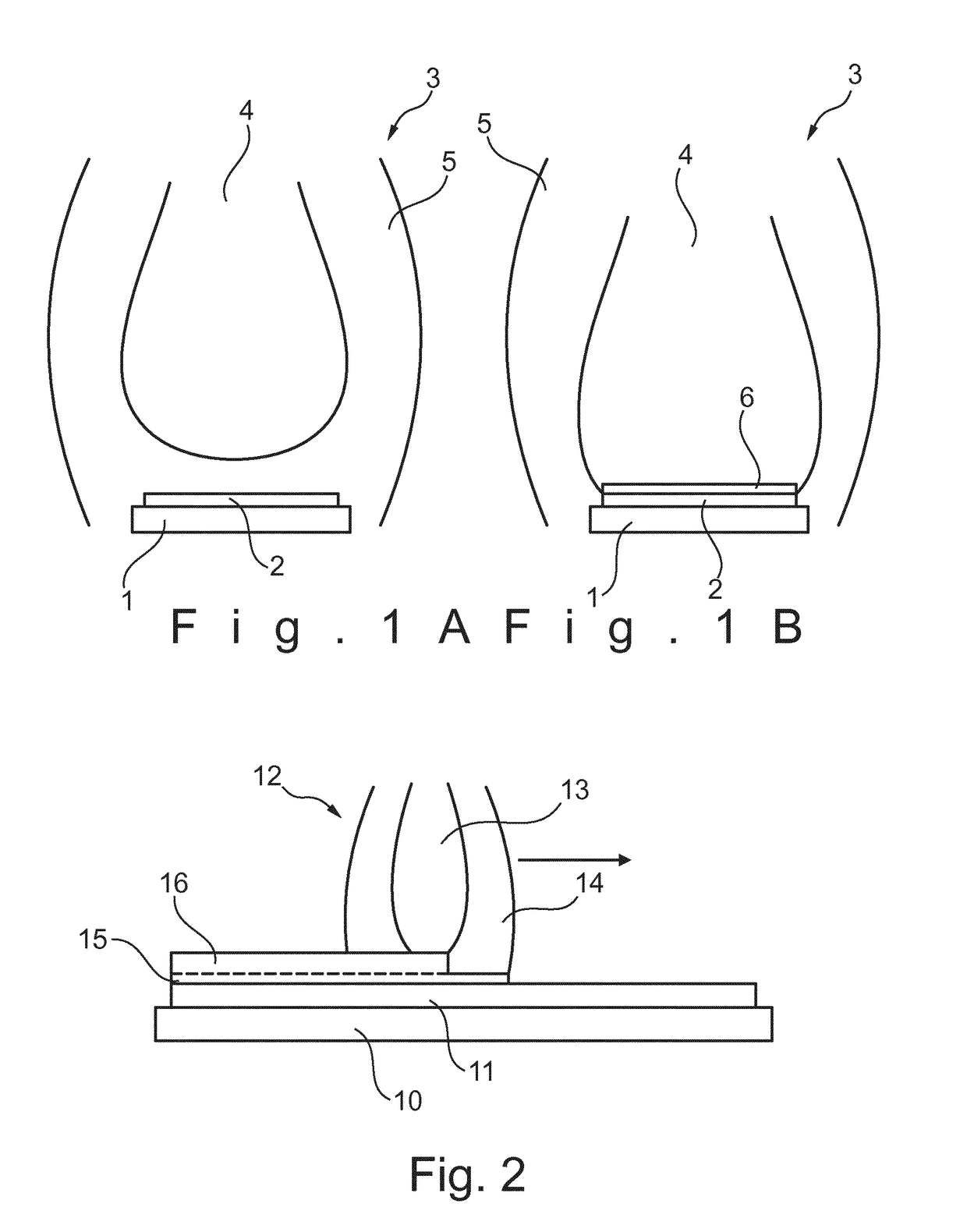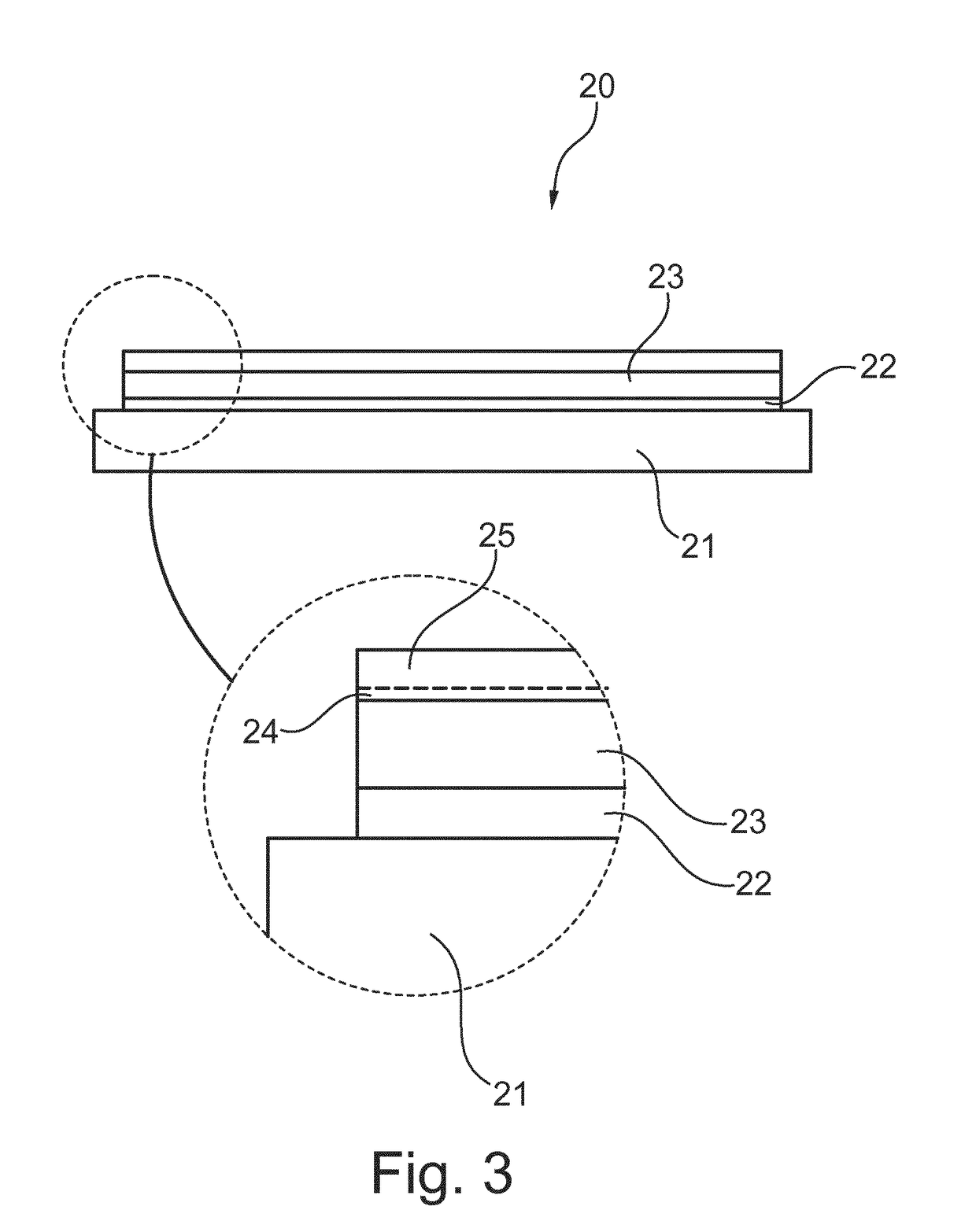Method for depositing a target material onto a organic electrically functional material
a technology of electrically functional materials and target materials, which is applied in the direction of vacuum evaporation coating, organic semiconductor devices, coatings, etc., can solve the problems of reduced light produced when powered, material functionality loss or significant reduction, and even complete failure, so as to achieve the effect of lowering the pressure regim
- Summary
- Abstract
- Description
- Claims
- Application Information
AI Technical Summary
Benefits of technology
Problems solved by technology
Method used
Image
Examples
first embodiment
[0054]FIG. 1A shows a first step of the method according to the invention. A substrate 1 is provided with a layer of organic electrically functional material 2. A vapor plume 3 with particles of a target material is generated with a pulsed laser deposition method. This vapor plume 3 has a core 4 and an envelope 5.
[0055]By controlling the pressure regime in which the vapor plume 3 is generated, the reach of the plume 3 and the impact of the particles within the plume 3 can be controlled. In the step shown in FIG. 1A, the pressure is relative high, such that the kinetic energy of the particles within the plume 3 is reduced and the particles have a ‘soft landing’ on the surface of the organic electrically functional material and form a first layer of target material 6.
[0056]In the step shown in FIG. 1B, the pressure is reduced, such that the particles within the plume 3 keep their kinetic energy and are deposited on top of the first layer of target material 6 in the conventional way to...
second embodiment
[0057]FIG. 2 shows the method according to the invention. A substrate 10 is provided with a layer 11 of a organic electrically functional material. Furthermore, a vapor plume 12 is generated. This vapor plume 12 has a core 13 with particles having a relatively high velocity, and an envelope 14 around the core 13 with particles with a relatively low velocity.
[0058]The plume 12 is moved over the surface of the organic electrically functional material 11. The envelope 14 deposits first a first layer 15 of target material of the organic material 11. The trailing core 13 then deposits a second layer 16 on the already deposited first layer 15. As the first layer 15 and second layer 16 are deposited with the same target material particles, a virtually homogeneous layer of target material on top of the organic material 11 is created.
embodiment 20
[0059]FIG. 3 shows an embodiment 20 of an organic light emitting diode (OLED). This OLED 20 has a substrate layer 21, like a glass layer. A first conductive layer 22 is deposited with a conventional physical vapor deposition method on this substrate layer 21. Then an emissive electroluminescent layer 23 is provided on top of the conductive layer 22.
[0060]With the method according to the invention a second conductive layer 24, 25 is arranged on top of the sensitive, emissive electroluminescent layer 23. The first layer 24 of transparent conductive material is first deposited, after which the second layer 25 of transparent conductive material is deposited. Because both layers 24, 25 are subsequently deposited, a homogeneous layer is provide on the emissive electroluminescent layer 23.
[0061]When a voltage is applied to the two conductive layers 22 and 24, 25 the emissive electroluminescent layer 23 will emit light. As both conductive layers can be made transparent using for example ind...
PUM
| Property | Measurement | Unit |
|---|---|---|
| Transparency | aaaaa | aaaaa |
| Velocity | aaaaa | aaaaa |
Abstract
Description
Claims
Application Information
 Login to View More
Login to View More - R&D
- Intellectual Property
- Life Sciences
- Materials
- Tech Scout
- Unparalleled Data Quality
- Higher Quality Content
- 60% Fewer Hallucinations
Browse by: Latest US Patents, China's latest patents, Technical Efficacy Thesaurus, Application Domain, Technology Topic, Popular Technical Reports.
© 2025 PatSnap. All rights reserved.Legal|Privacy policy|Modern Slavery Act Transparency Statement|Sitemap|About US| Contact US: help@patsnap.com



